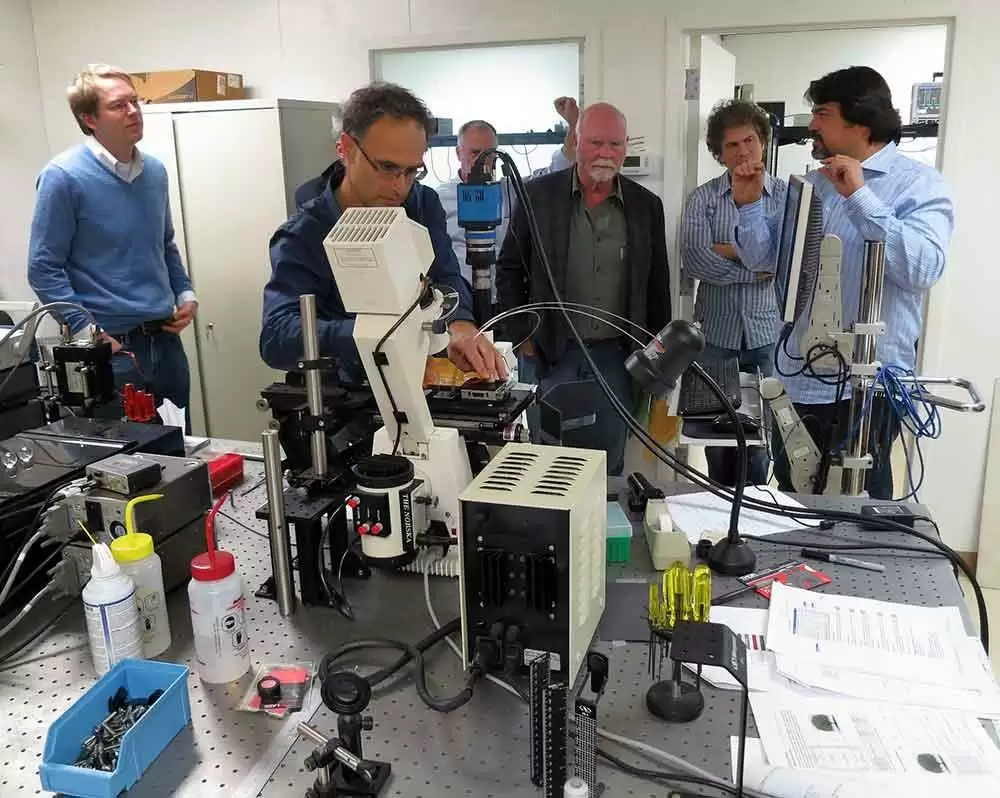
Celiac.com 11/05/2022 - Although the foods we eat are most often considered to be composed of small molecules of fat, carbohydrate and protein, we of course actually take in very complex mixtures of long chains (called polymers) that only have the potential of becoming simple nutrients (or monomers) such as fatty acids, glucose, and amino acids that are eventually assimilated from the intestine into the body. Of the nutrient foods, proteins have special importance, because they contain many amino acids components, including the essential amino acids that humans are incapable of manufacturing from more simple building blocks.
Humans ingest 25 to 70 grams of protein daily, and this provides the amino acid building blocks that are required for the manufacture of important body proteins such as the common muscle protein (myoglobin), and the multiple enzymes that serve as crucial facilitators for maintaining numerous important bodily functions. Although it is common for us to consider the amino acids components of protein, we tend to skip over the idea that proteins contain 100 to 3,000 or more amino acid units tightly attached in a head-to-tail sequence and that proteins need to be processed to simpler products by efficient breaking of the links, so called peptide bonds, between adjacent amino acids. This involves the action of proteases secreted into the stomach (pepsin), from the pancreas (trypsin, chymotrypsin, elastase and others), and the final digestion on the surface of the small intestine by the attached peptidases. As a meal enters the stomach reservoir, it encounters the acidic environment produced by secretion of hydrochloric acid, making conditions ideal for the action of stomach pepsin to initiate the breaking of peptide bonds at the interior of the protein to shorten the long peptide chain. After 30 to 60 minutes, the partially digested protein fragments exit from the stomach and join the more neutral environment of the upper small intestine (so called because it is a tube with a smaller diameter than the stomach above it or the colon below; but, actually, it is more than 20 feet long, and it provides the environment for the complete digestion and absorption of nutrients and vitamins). In addition to being a long tube, the small intestinal area is greatly increased by folds and finger-like projections of Villi and small microvilli stacked upon each of the millions of surface cells of the small intestine. Indeed, the 20 feet of intestine with its diameter of only 2 inches or so, has the surface area 600 times that of a flat pipe, equaling that of a tennis court.
Celiac.com Sponsor (A12):
The first portion of the small intestine is the duodenum into which the stomach empties, where digestive enzymes and particularly the proteases are secreted from their storage sites in the pancreas into the duodenal space to mix with buffers that neutralize stomach acid and create the proper environment for the enzyme action on the protein fragments that have arrived from the stomach. The duodenum provides an ideal environment for the polymer foods to be broken down to smaller products. The vast majority (90-95 %) of proteins and other nutrients that we eat are rapidly processed to much smaller products that can then undergo final digestion on the surface of the small intestine as they are propelled by migrating waves of contraction (called peristalsis) down the length of the upper small intestine (the jejunum) with completion of the digestive-absorptive process in the lower small intestine (the ileum). In the case of most dietary protein, smaller peptides (2-6 amino acids in chain-length) and free amino acids are handed over to the intestine for final processing and assimilation into the body. Ordinarily, there is a great excess of the pancreatic enzymes, and the slowest process of nutrient assimilation is the intestinal surface digestion and absorption of the final small products.
Incomplete Processing of Gluten: A Problem in Celiac Sprue
Despite the great capacity of the human digestive-absorptive machinery, the efficient assimilation of dietary protein depends upon which of the bonds linking the amino acids can be attacked and readily broken. The ease with which these bonds are broken by proteases and peptidases depends particularly on the particular amino acids that are present on either side of the bond. Proteins that contain many proline amino acid units are resistant to digestion by the pepsin and the pancreatic proteases. This results in an incomplete breakdown of some proline-rich proteins such as segments of the gliadin in wheat. Indeed, the digestion of gliadin peptides yields larger peptides as final products, often 20 to 30 or more amino acid chain length; these may be further processed hardly at all by any of the proteases from human stomach, pancreas or by peptidases at the intestinal surface. Such large oligopeptides simply remain harmlessly in the intestinal lumen in most individuals and are subsequently processed by the bacteria normally present in the colon. However, in Celiac Sprue, the intact gliadin oligopeptides interact with the small intestine to initiate the cascade of events leading to tremendous loss of villi and the intestinal surface area with consequent loss of the normal intestinal digestive-absorptive capacity.
Can the Toxic Gluten be Detoxified?
The Celiac Sprue Research Foundation (CSRF) is conducting research into the processes of protein and gliadin digestion, with the view toward discovering ways to further digest the resistant gliadin peptides so that they are no longer damaging to the Celiac intestine. In an initial approach, CSRF is in the process of designing a trial of a supplemental peptidase that will break down those high-proline, poorly digested gliadin peptides that are formed during the normal digestive processes in the stomach and pancreas. The CSRF will be asking those in remission with Celiac Sprue to join in a study involving the ingestion of an intact gluten supplement as compared to gluten that has been exposed to a special added peptidase that is expected to further digest the gliadin peptides to render them nontoxic. Those with Celiac Sprue in remission will consume the regular gluten supplement for one two-week period and the peptidase-treated gluten for a another two-week period. The response of symptoms and special Celiac antibody and intestinal absorption tests will be done in a "controlled" way so that neither the investigators nor the Celiac volunteers will be aware of the particular preparation they were taking over each two-week period. We suspect that the peptidase-supplemented gluten will be rendered non-toxic and that no negative effect on symptoms or special Celiac tests will occur. If this "gluten detoxification" proves to be successful, the stage will be set for a full-fledged effort to validate the potential of supplemental peptidase therapy in Celiac Sprue.











Recommended Comments
There are no comments to display.
Create an account or sign in to comment
You need to be a member in order to leave a comment
Create an account
Sign up for a new account in our community. It's easy!
Register a new accountSign in
Already have an account? Sign in here.
Sign In Now